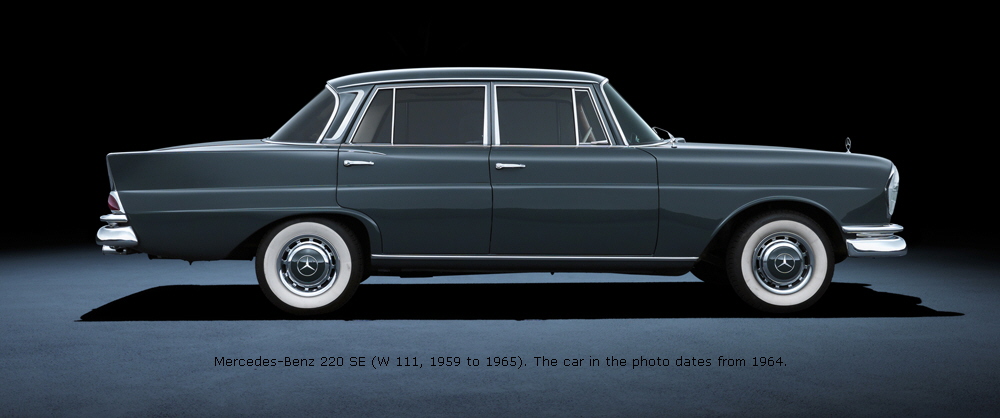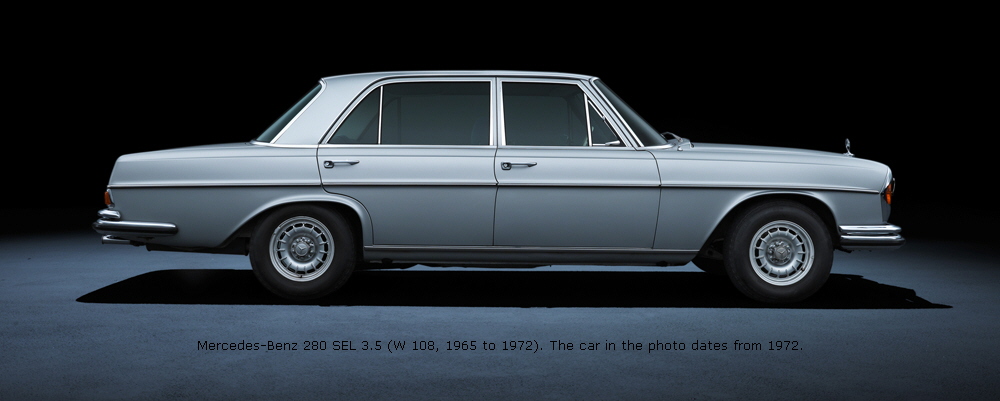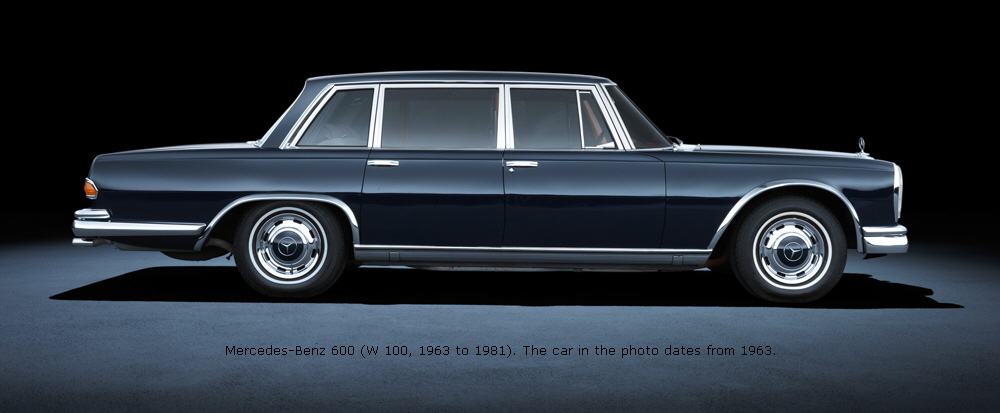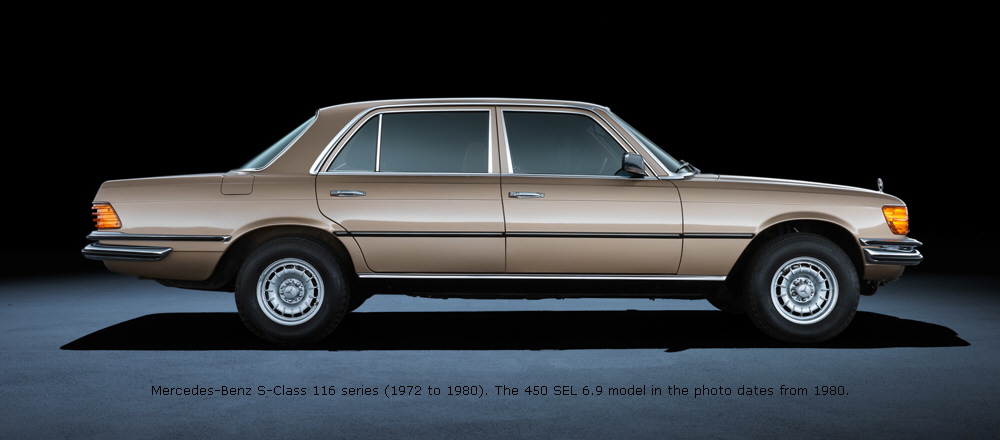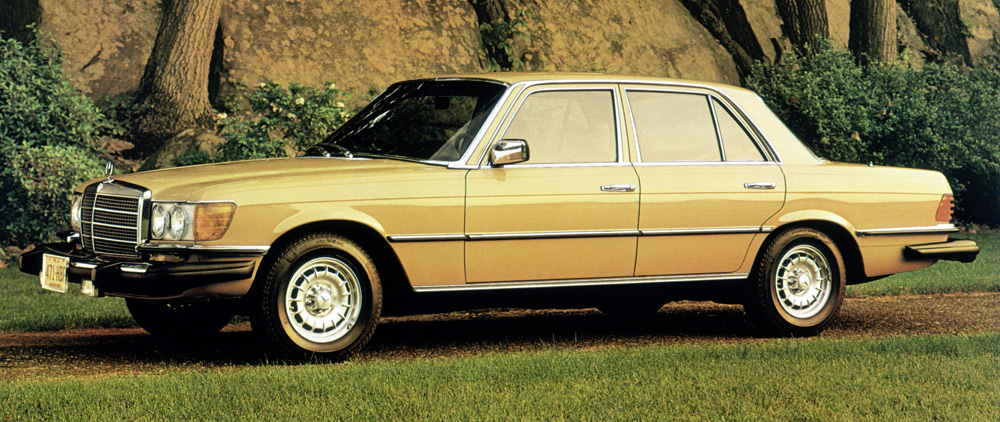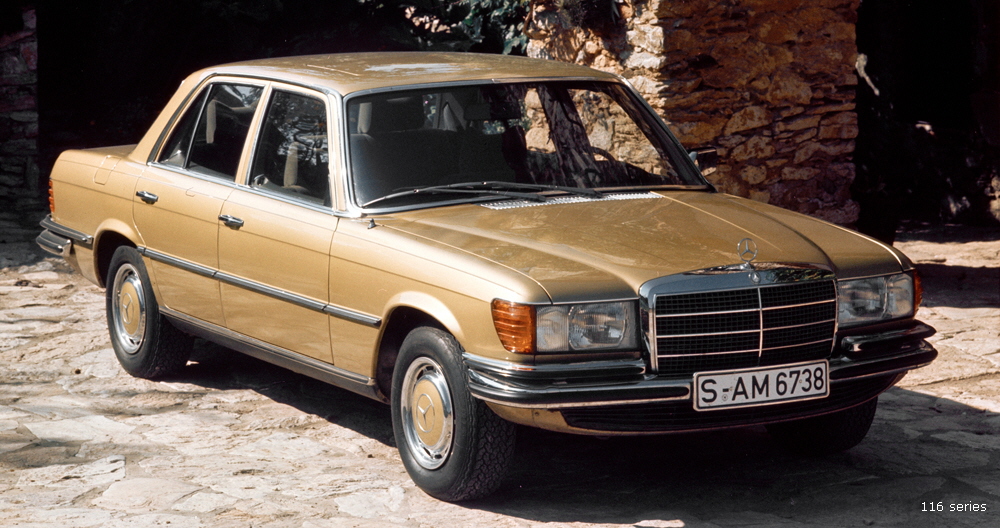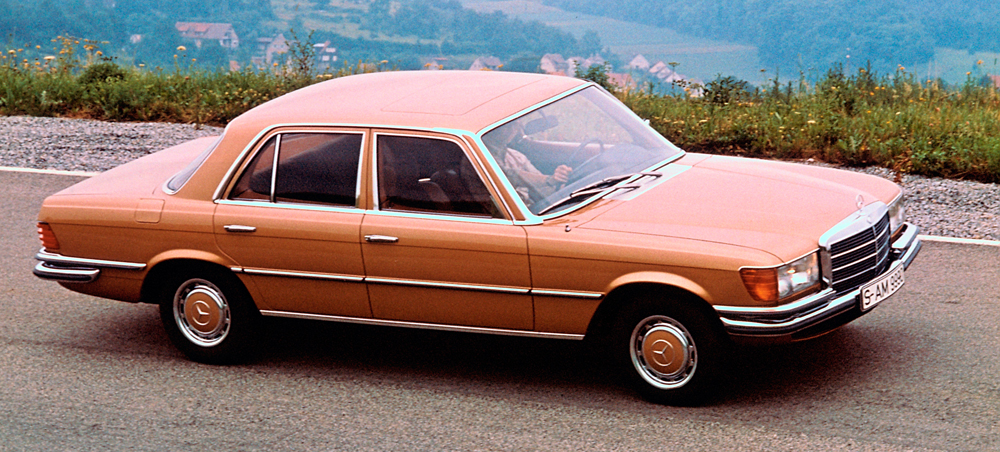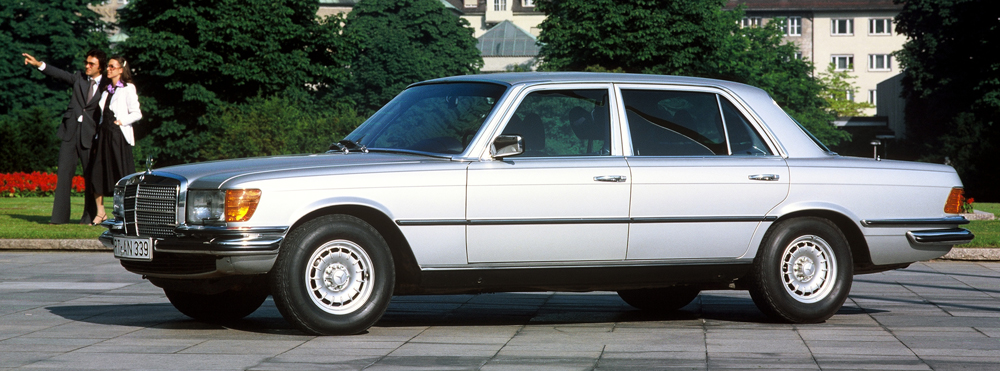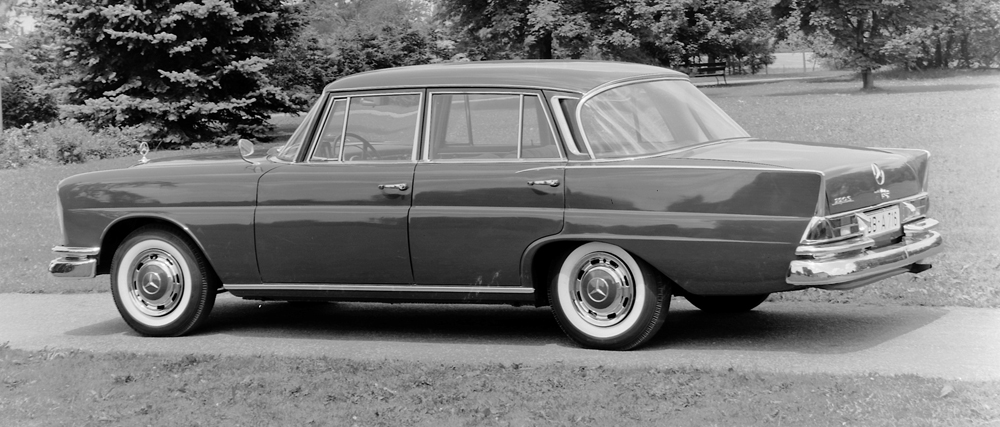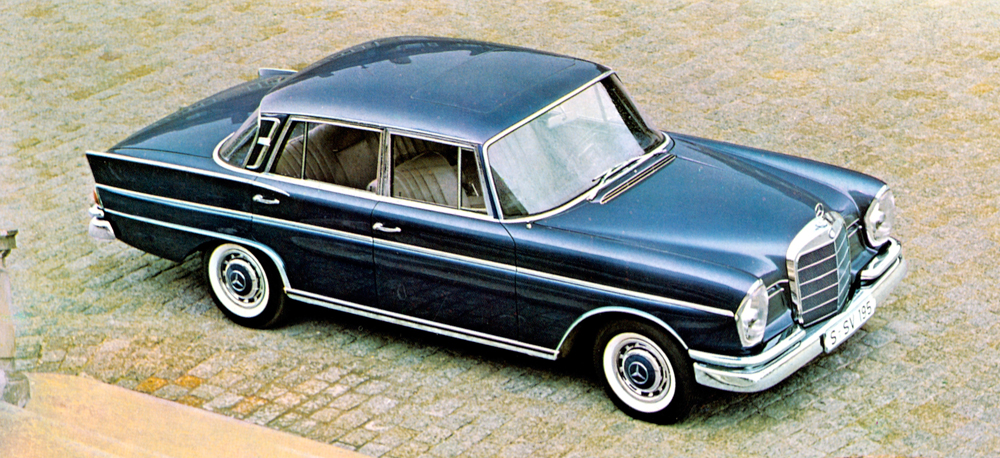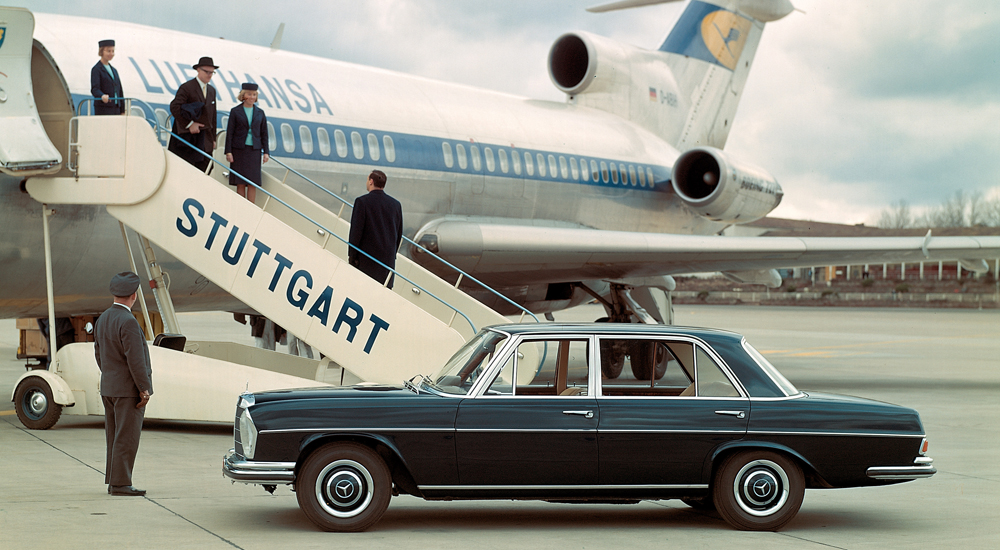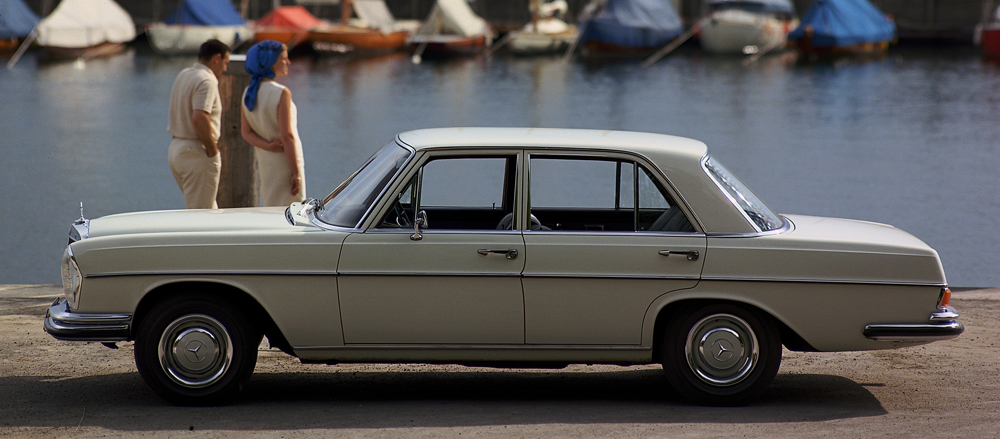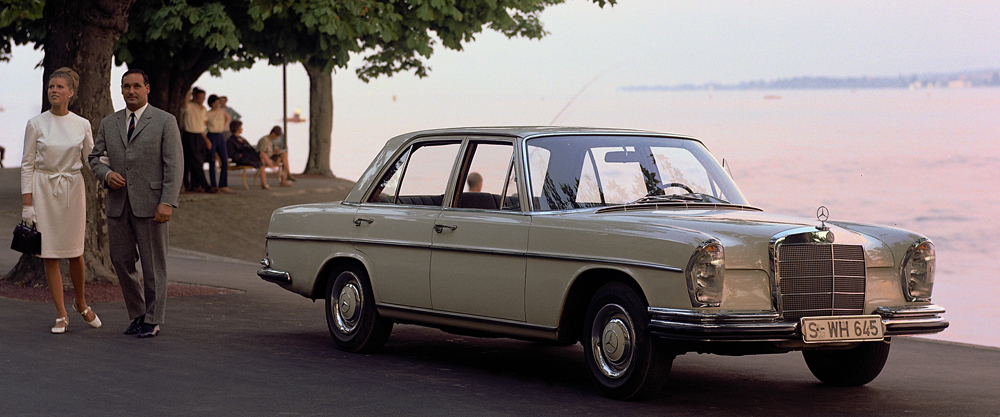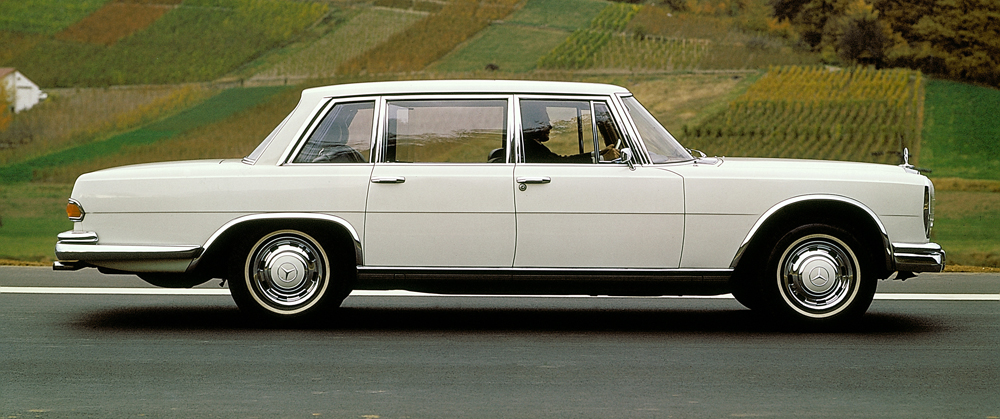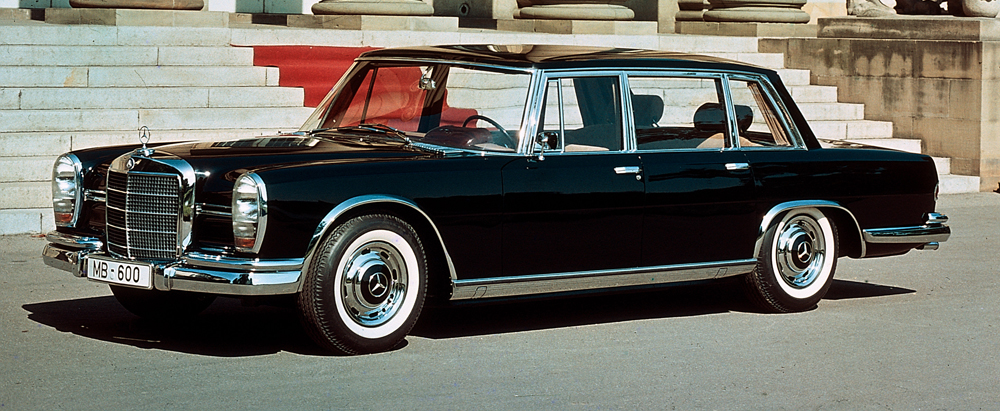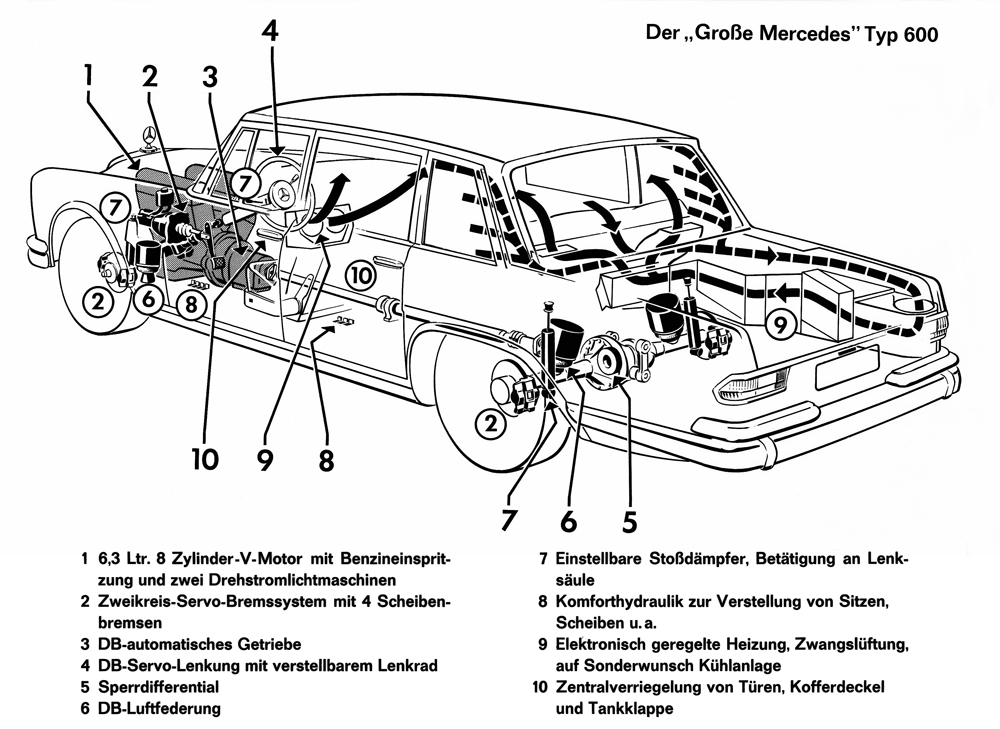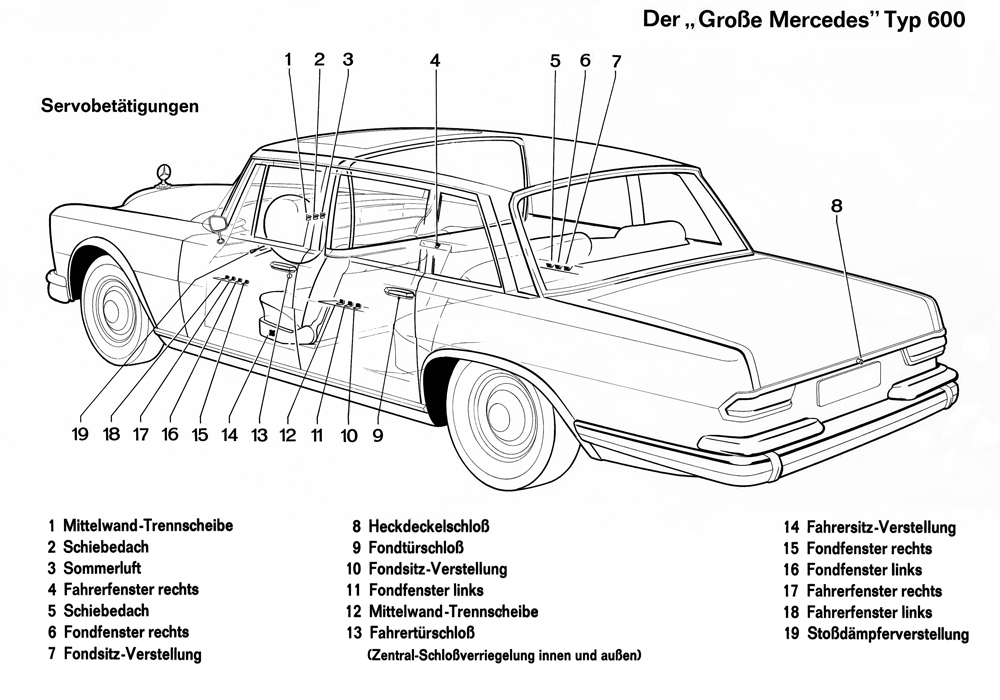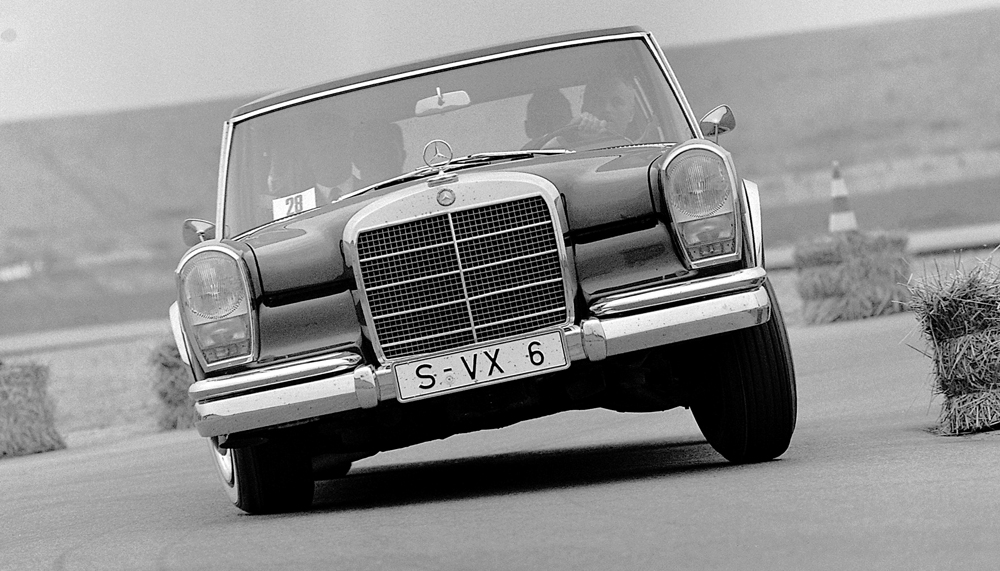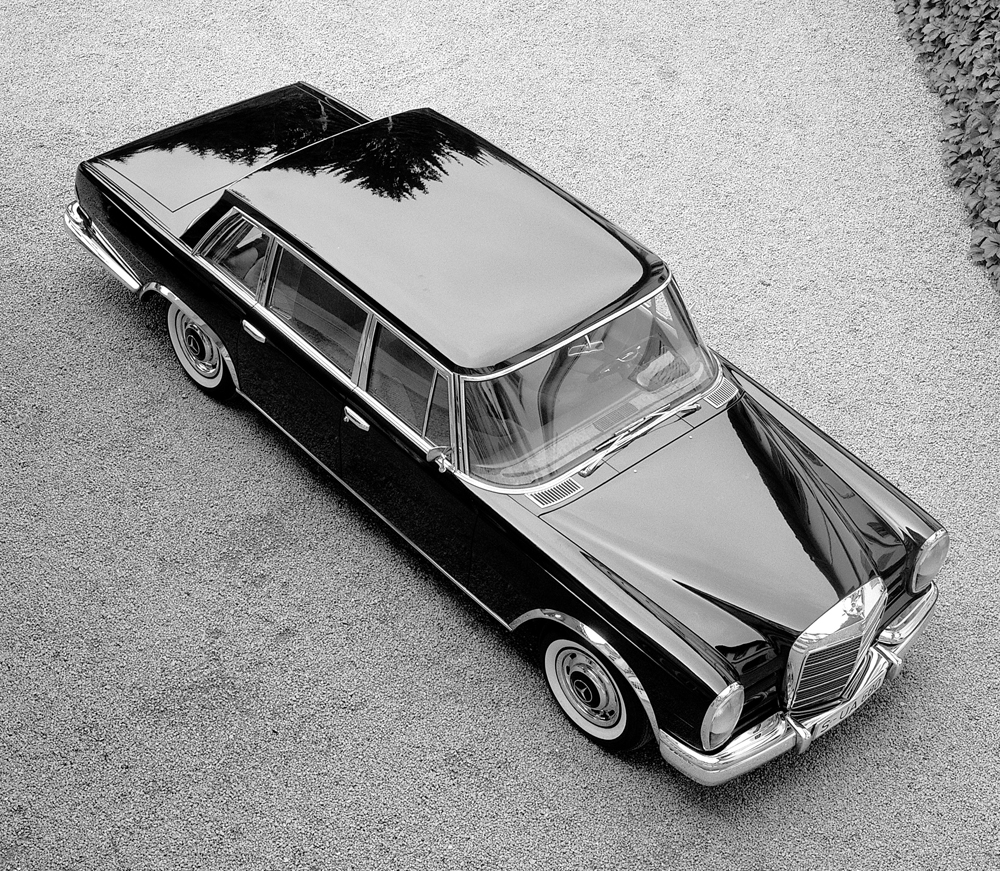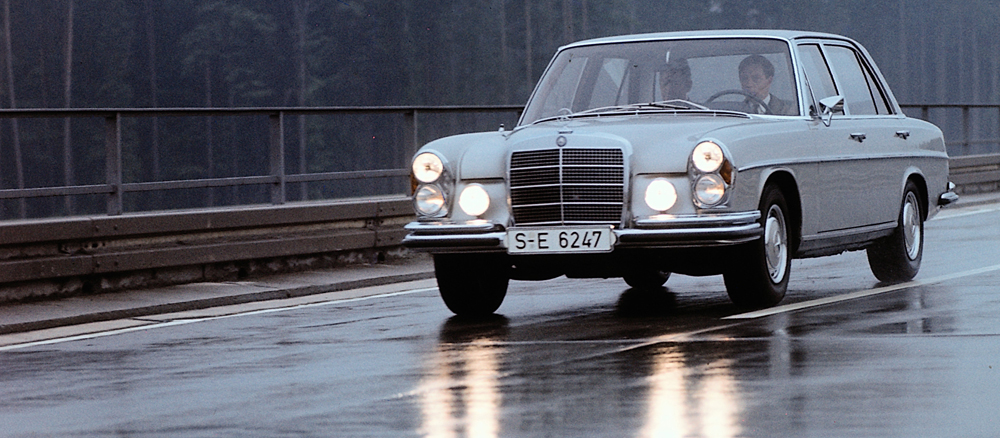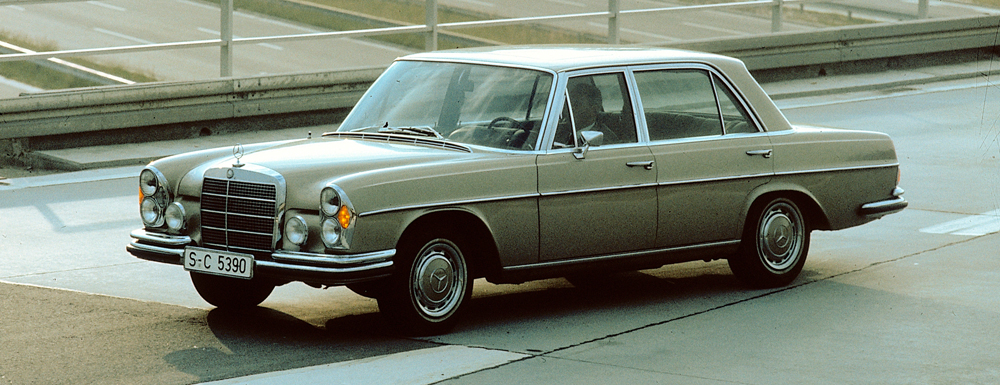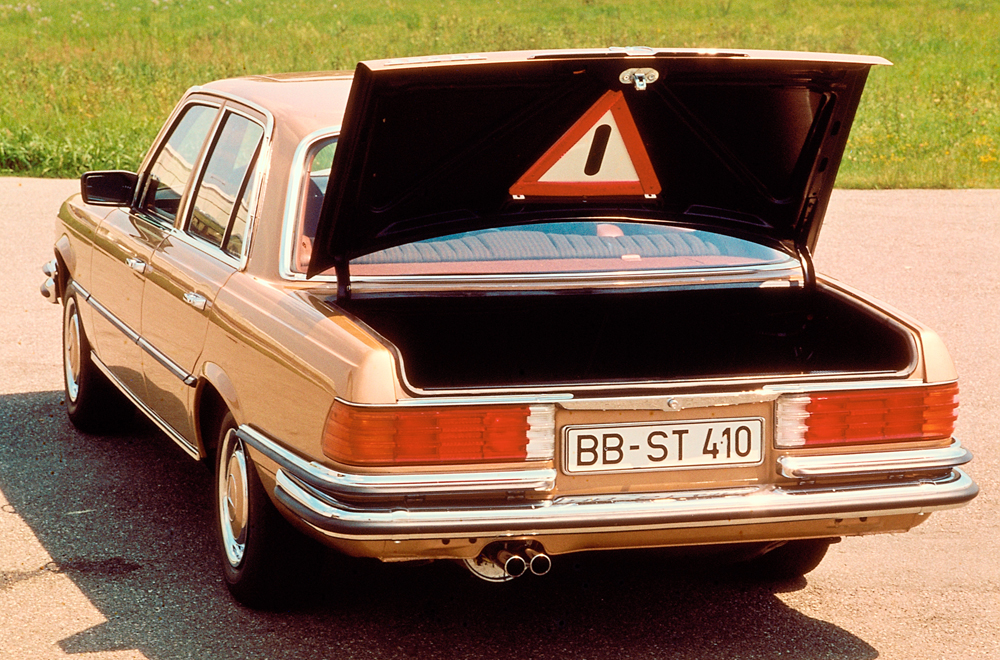|
|
|
Mercedes-Bena S-Class (1959 to 1979) From 'fintail' to high-performance saloon (1959 to 1972) The 'fintail' models introduced in 1959 (220, 220 S and 220 SE (W 111)) earned their nickname from the understated tail fins that adorned the rear wing. Owing to their function as a parking aid, they were also officially known as 'sight lines'. The new high-end generation represented a very special milestone in automotive history, as this was the first time that the safety bodyshell with crumple zones devised by Béla Barényi had been used on a series production car. The flagship model presented in 1961, the 300 SE (W 112), was fitted as standard with air suspension and the newly developed automatic transmission from Mercedes-Benz, and its longer version in 1963 started off a tradition in luxury class saloons by Mercedes-Benz: the wheelbase, which was now 10 centimetres longer, offered rear passengers significantly more legroom and comfort. The 108 and 109 sedans, which replaced the 1965 'Fintail', were characterised by a timelessly elegant design and large windows. In addition to the models fitted with conventional steel springs – referred to internally as the 108 series –, there was also an air-sprung variant of the model series 109, which was also available from the outset with a 10 cm longer wheelbase. Special highlights included the 300 SEL 6.3 presented in 1968. The new top-of-the-range model in the series was fitted with the high-performance V8 engine from the high-end Mercedes-Benz 600 sedan. In addition to exceptional comfort and luxurious interior fittings, it also rivalled the performance of a sports car.
The legendary type 600 (1963 to 1981) One and a half years after the last 300 rolled off the production line in Sindelfingen in March 1963, a new top-of-the-range model from Mercedes-Benz made its debut at the International Motor Show in Frankfurt. The type 600 (W 100) was a superlative vehicle: its 6.3-litre V8 engine delivered an extremely respectable performance and a top speed in excess of 200 km/h. Optimum ride comfort was ensured by air suspension, an automatic transmission manufactured in-house and electronic power steering. Unique hydraulic comfort features enabled adjustment of the front seats and rear bench, opening and closing of the doors, boot lid and optional sliding roof, and opening and closing of the side windows. The five to six-seater version with a regular wheelbase of 3200 millimetres was predominantly ordered by highly discerning private customers. In addition, Mercedes-Benz also offered a seven to eight-seater version with a 70 cm longer wheelbase, which was primarily used as an official state or ceremonial limousine. In June 1981, the last of a total of 2,677 examples of the legendary luxury saloon was produced at the Mercedes-Benz plant in Sindelfingen. It was driven straight to Untertürkheim, where it was given pride of place in the company's vehicle collection.
Model series 116 (1972 to 1980) The name of the next-generation 116 launched in 1972 also reflected what had been on the agenda at Mercedes-Benz for decades: all luxury sedans with an 'S' in their model designation were now officially referred to as 'S-Class'. The new designation went hand in hand with a whole bundle of innovations that set new standards in respect of safety and comfort. The comprehensive safety concept included a collision-proof fuel tank, a four-spoke safety steering wheel, dirt-deflecting side windows, larger headlamps, distinctive turn signal lamps and dirt-deflecting ribbed rear lamps. 1977 saw the dawn of the diesel age in the premium class with the 300 SD, although this was initially just in the North American markets. The luxury diesel was also the first series production car with a turbo-diesel engine. From 1978, the S-Class was the first series production vehicle to be fitted with ABS (anti-lock braking system), which ensured that the vehicle would respond fully to the driver's steering action even in an emergency braking situation. A global sensation, this ground-breaking innovation is now standard across all vehicle categories. The S-Class underlined its status as an automotive engineering benchmark and its model designation became a generic term for high-end vehicles.
The Mercedes-Benz 300 SD turbo diesel (116 series) was the first standard turbo-diesel passenger car as well as the first luxury-class saloon with a diesel engine. This luxury diesel was only sold in the United States and Canada.
The 116 series, unveiled in 1972, was the first Mercedes-Benz luxury saloon to bear the S-Class name. The new model series featured numerous innovations and defined the future look of the Mercedes-Benz passenger car.
The Mercedes-Benz 450 SEL 6.9 became the new, top-of-the-line S-Class in 1975. Besides the 6.9-litre V8 engine, it stood out for its hydropneumatic suspension and extensive range of equipment.
Side view of the Mercedes-Benz 220 S (W 111) with its characteristic tail fins, which were officially known as 'sight lines'. Photo taken in 1959.
Top-class 'tail-fin' model: Mercedes-Benz 300 SE (W 112) of 1961, which came with automatic transmission, air suspension and four disk brakes as standard.
'Tail-fin' Mercedes-Benz 220 SE (W 111) from 1959, the world's first production car with a safety body and crumple zones.
The Mercedes-Benz 300 SEL (W 109) as a company car on the airfield, marketing photo for the 1965 catalogue.
Mercedes-Benz 250 SE (W 108), marketing photo taken in 1966.
A Mercedes-Benz 600 (W 100) for once not shown in traditional black. This top-of-the-line model came with a unique range of technical features as standard.
The Mercedes-Benz 600 (W 100) pictured in front of Rosenstein Palace in Stuttgart in 1963. This new, top-of-the-line model came with a unique range of technical features as standard.
Mercedes-Benz 600 (W 100): the key technical features of the new, top-of-the-line model shown in a diagram taken from the 1963 press kit. 1.) 6.3-litre V8 engine with petrol injection system and two three-phase alternators 2.) Dual-circuit booster brake system with four disk brakes 3.) Automatic transmission 4.) Power steering with tilt steering wheel 5.) Locking differential 6.) Air suspension 7.) Adjustable shock absorber, control on the steering column 8.) Convenience hydraulic system for adjusting the seats, windows and more 9.) Electronically controlled heating, forced ventilation, optional extra: cooling system 10.) Central locking of doors, boot lid and fuel filler flap
Mercedes-Benz 600 (W 100): range of functions offered by the innovative convenience hydraulic system shown in a diagram taken from the 1963 press kit. Power controls 1.) Centre panel partition 2.) Sliding sunroof 3.) Supplementary ventilation flap 4.) Driver window on the right 5.) Sliding sunroof 6.) Rear window on the right 7.) Rear seat adjustment 8.) Boot lid lock 9.) Rear door lock 10.) Rear seat adjustment 11.) Rear window on the left 12.) Centre panel partition 13.) Driver door lock (central locking on the inside and outside) 14.) Driver seat adjustment 15.) Rear window on the right 16.) Rear window on the left 17.) Driver window on the right 18.) Driver window on the left 19.) Shock absorber adjustment
The 6.3-litre V8 engine enabled the Mercedes-Benz 600 (W 100) to achieve a top speed of 205 km/h and a level of dynamism that belied its appearance as a high-end saloon. It is shown here at a presentation in 1965.
A bird's eye view of the Mercedes-Benz 600 (W 100) taken in 1965. This new, top-of-the-line model came with a unique range of technical features as standard.
Mercedes-Benz 300 SEL 6.3 (W 109), marketing photo for the 1969 catalogue. The V8 engine, familiar from the 600 model, turned the comfortable luxury-class saloon into a veritable high-performance vehicle that drove like a sports car.
Mercedes-Benz 300 SEL 6.3 (W 109) dating from 1968. The V8 engine, familiar from the 600 model, turned the comfortable luxury-class saloon into a veritable high-performance vehicle that drove like a sports car.
S-Class 116 series from 1972: its numerous innovative features included generously sized tail lights, which remained highly visible even if dirty thanks to their ribbed shape.
|
|
Home < Mercedes-Benz < Mercedes-Benz Cars < Historical Models < 1979-1960
|
